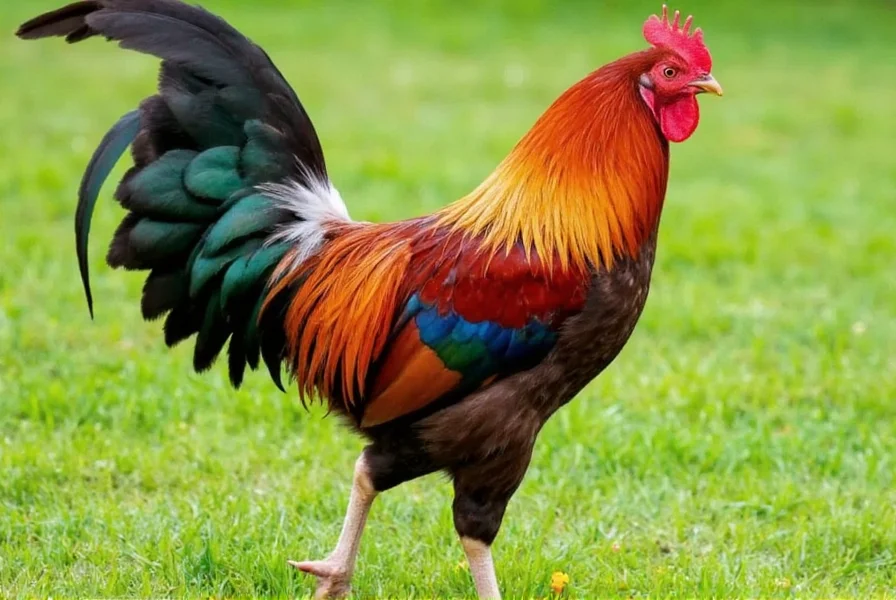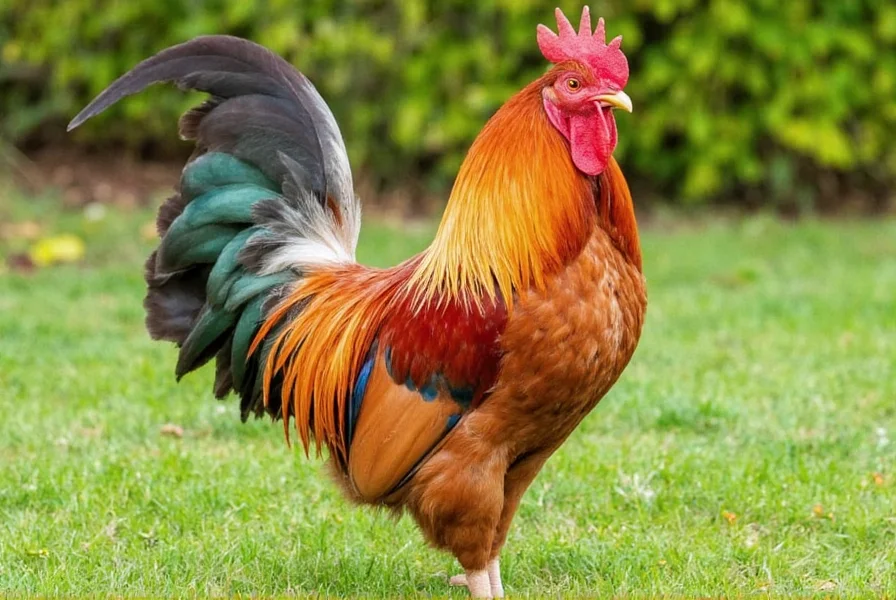Understanding the characteristics of Cinnamon Queen roosters is essential for backyard chicken keepers considering this popular hybrid breed. While Cinnamon Queens are primarily bred for their exceptional egg-laying capabilities in hens, the roosters play an important role in breeding programs and flock dynamics. This comprehensive guide provides accurate, research-based information about these distinctive birds.
Physical Characteristics of Cinnamon Queen Roosters
Cinnamon Queen roosters exhibit different plumage than their female counterparts, which is one of the key features of this sex-linked hybrid. While hens develop the characteristic cinnamon-colored feathers that give the breed its name, roosters display a more complex color pattern:
| Feature | Cinnamon Queen Rooster | Cinnamon Queen Hen |
|---|---|---|
| Primary Coloration | White with reddish-brown hackle and saddle feathers | Uniform reddish-brown ("cinnamon") |
| Weight at Maturity | 6-8 pounds | 5-6 pounds |
| Growth Rate | Rapid (reaches maturity in 16-18 weeks) | Rapid (begins laying at 16-18 weeks) |
| Comb Type | Single comb | Single comb |
The distinctive feather pattern makes sexing Cinnamon Queen chicks extremely reliable at hatching, which is one reason commercial operations favor this hybrid. Roosters develop their characteristic coloration as they mature, with the reddish-brown feathers becoming more pronounced on the neck and back areas.
Temperament and Behavior Patterns
When evaluating cinnamon queen rooster temperament, these birds generally demonstrate more docile behavior than many heritage breeds. However, individual personalities can vary significantly:
- Social compatibility: Most Cinnamon Queen roosters integrate well into mixed flocks when introduced properly
- Protective instincts: They exhibit moderate protective behavior but are typically less aggressive than Rhode Island Red roosters
- Human interaction: Many respond well to regular handling, especially when socialized from a young age
- Vocalization: Their crowing follows typical rooster patterns, though volume can vary between individuals
Understanding are cinnamon queen roosters aggressive requires acknowledging that while the breed tends toward calmness, all roosters can develop aggressive tendencies as they mature. Proper management, adequate space, and early socialization significantly influence their behavior. The cinnamon queen rooster vs rhode island red rooster comparison often shows Cinnamon Queens as slightly less territorial.
Practical Considerations for Backyard Flocks
Before adding a Cinnamon Queen rooster to your flock, consider these important factors:
Legal and Zoning Restrictions
Many municipalities prohibit roosters in residential areas due to noise concerns. Always check local ordinances before acquiring a rooster, regardless of breed. The cinnamon queen rooster noise level is comparable to other medium-sized breeds, but even infrequent crowing may violate local regulations.
Flock Dynamics
A single Cinnamon Queen rooster can typically manage a flock of 8-12 hens. Introducing a rooster to an established flock requires careful monitoring, as existing social hierarchies may lead to temporary aggression. The cinnamon queen rooster with other breeds generally integrates well, though more aggressive breeds may challenge them.
Space Requirements
Provide at least 10 square feet per bird in the run area. Cinnamon Queen roosters need adequate space to establish territory without becoming overly aggressive. Confinement in small spaces significantly increases the likelihood of cinnamon queen rooster aggression problems.
Health and Care Requirements
Cinnamon Queen roosters share the same basic care requirements as other hybrid chickens but have some specific considerations:
- Nutrition: Feed a balanced layer ration (even to roosters) to ensure proper nutrition; avoid medicated feeds unless specifically needed
- Common health issues: Generally robust, but watch for mites, respiratory issues, and bumblefoot
- Lifespan: Typically 5-8 years with proper care, though commercial hybrids may have slightly shorter lifespans than heritage breeds
- Winter care: Their single comb makes them susceptible to frostbite in extremely cold climates
Regular health checks and maintaining a clean environment prevent most common poultry issues. The cinnamon queen rooster care guide should emphasize preventive healthcare rather than treatment-focused approaches.
Common Misconceptions Clarified
Several myths surround Cinnamon Queen roosters that deserve clarification:
- Misconception: Cinnamon Queen roosters have the same coloration as hens
Reality: The breed is sex-linked specifically because males and females have different color patterns - Misconception: They cannot breed true offspring
Reality: Correct. Cinnamon Queens are a hybrid cross (typically Rhode Island Red male x New Hampshire female), so their offspring won't consistently produce the same characteristics - Misconception: They are completely non-aggressive
Reality: While generally calm, individual roosters may develop aggression, especially if improperly socialized or overcrowded

When Cinnamon Queen Roosters Might Not Be Ideal
Despite their generally favorable temperament, these roosters aren't suitable for all situations:
- Urban or suburban settings with noise restrictions
- Flocks with significantly more aggressive breeds that may challenge them
- Situations requiring true-breeding stock (they're hybrids)
- Keepers seeking ornamental breeds with more distinctive plumage
For those specifically researching what does a cinnamon queen rooster look like, understanding these limitations helps make informed decisions about whether this breed aligns with your flock goals and local regulations.











 浙公网安备
33010002000092号
浙公网安备
33010002000092号 浙B2-20120091-4
浙B2-20120091-4